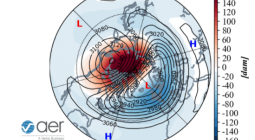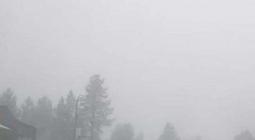Why is snow white?

It has everything to do with optics.
Imagine waking up after a night of heavy snowfall — you look out the window and see a world of white. But if you turn on a faucet or open the freezer, you'll notice that liquid water and ice usually appear clear. So, why is snow white?
When it comes to understanding how H2O, an inherently clear substance, can transform into something white, Kenneth Libbrecht, a professor of physics at the California Institute of Technology, and author of snowcrystals.com, a site about the physics of snowflakes, used the following analogy. "If you take a piece of glass, like a windowpane, which is obviously clear, but then you get a hammer out and you smash the pane into little bits of glass … now it's white."
Libbrecht said the key to this difference is how light interacts with a single surface like a window versus multi-faceted surfaces like broken glass, and that the same concept applies to snow.
According to the science of optics, when light hits an object, it is either transmitted (it passes through the object), absorbed (it "soaks" into the object), or reflected (it bounces off of the object). When light strikes a smooth flat surface like glass or ice, its visible rays generally pass straight through without their paths being disturbed. And because our eyes only see objects by processing the light waves reflected off of or absorbed by an object, according to Popular Science, this is why glass and ice often appear clear.
However, in the case of shattered glass, countless uneven surfaces now exist. When light strikes these irregular surfaces, it reflects and scatters in all directions. This is also true of snowflakes, which, according to the University Corporation for Atmospheric Research, are made up of hundreds of teeny-tiny ice crystals varying in shape and structure. Because the light that strikes the glass shards or snowflakes is reflected back equally, these rays include all of the composite wavelength colors of visible light (red, orange, yellow, green, blue, indigo and violet), which together, look white. This is why our eye "sees" white when we look at snow.
"Snow-bow" of colors
Although snow's natural color may be white, it has been known to take on more hypnotizing hues.
According to Libbrecht, snowpack, icebergs and glaciers can sometimes appear blue when light enters their bellies through cracks and crevices (rather than reflecting off of their surfaces) and gets trapped. As this light travels within the snow and ice, countless ice crystals scatter it on its journey. The farther it travels, the more times it scatters. Because water and ice "preferentially absorb more red light than blue light," when the light rays finally emerge from the snow layers, it's the shorter blue wavelengths rather than the longer red wavelengths that reflect toward our eyes. The longer the scattering repeats, the more noticeable the blue hue will be. The National Snow and Ice Data Center suggests snow depths of at least a few feet (1 foot is 0.3 meters) are needed to see any tint at all.
Pink or red-tinted snow — nicknamed "watermelon snow" — has also been documented. Its color comes courtesy of a type of cold-loving freshwater algae living within the snowpack, which is red. Similarly, other particles and organisms can tint snow, too. Because of this, Libbrecht admits that, hypothetically, snow could assume any color of the rainbow.
Of course, it's no mystery where one color of snow comes from; if you see yellow snow, it's a safe bet animal tracks are nearby.
16 January 2021
Live Science.




